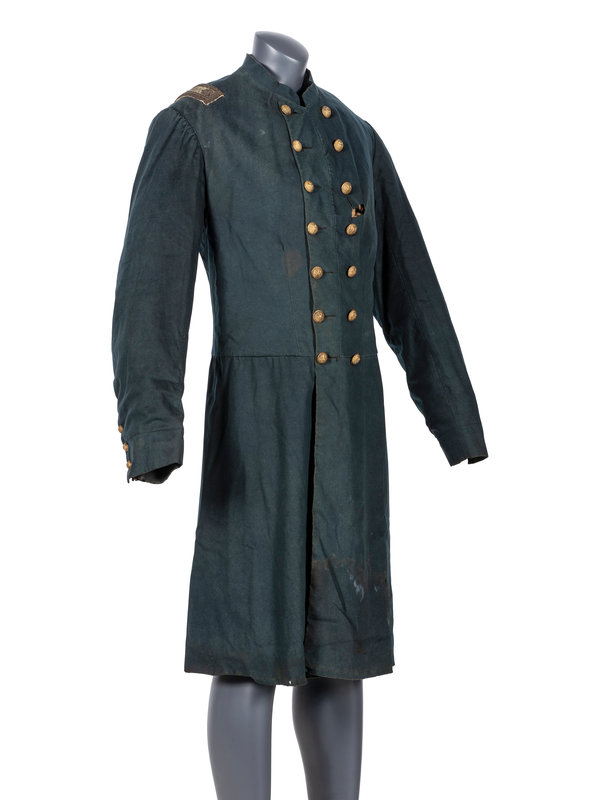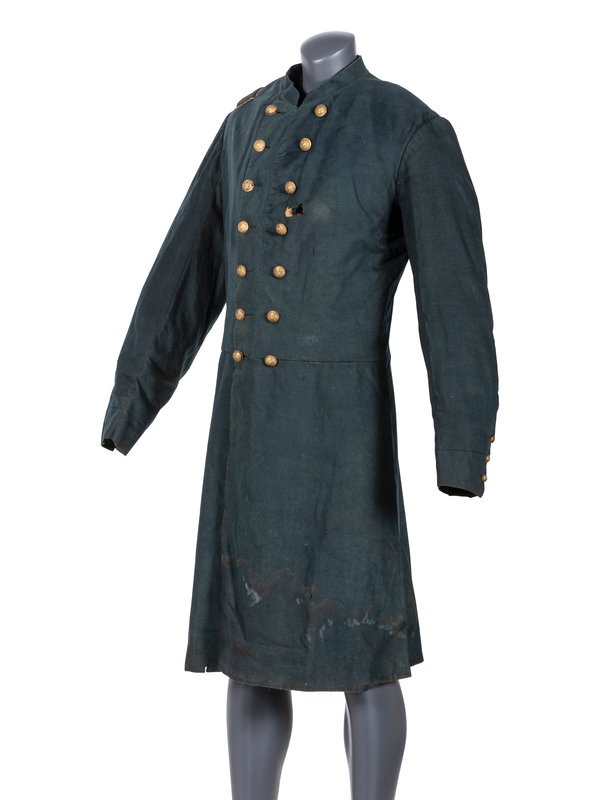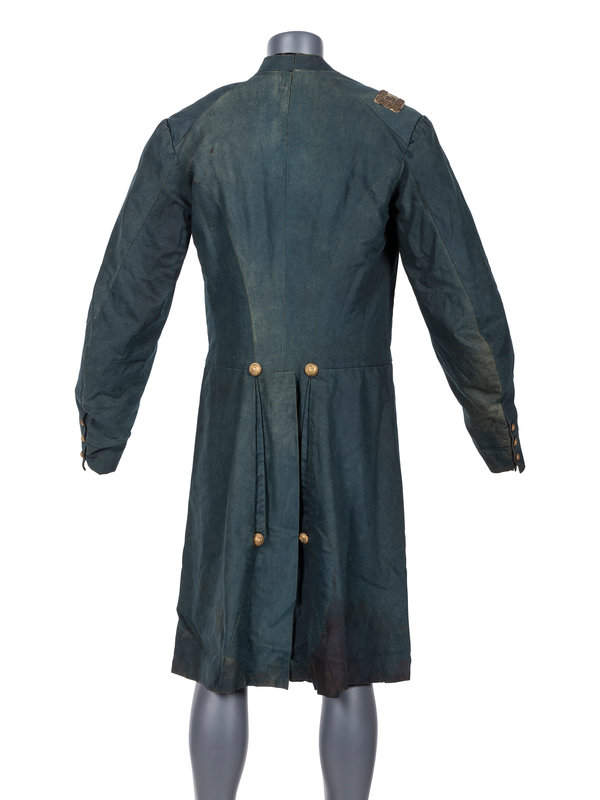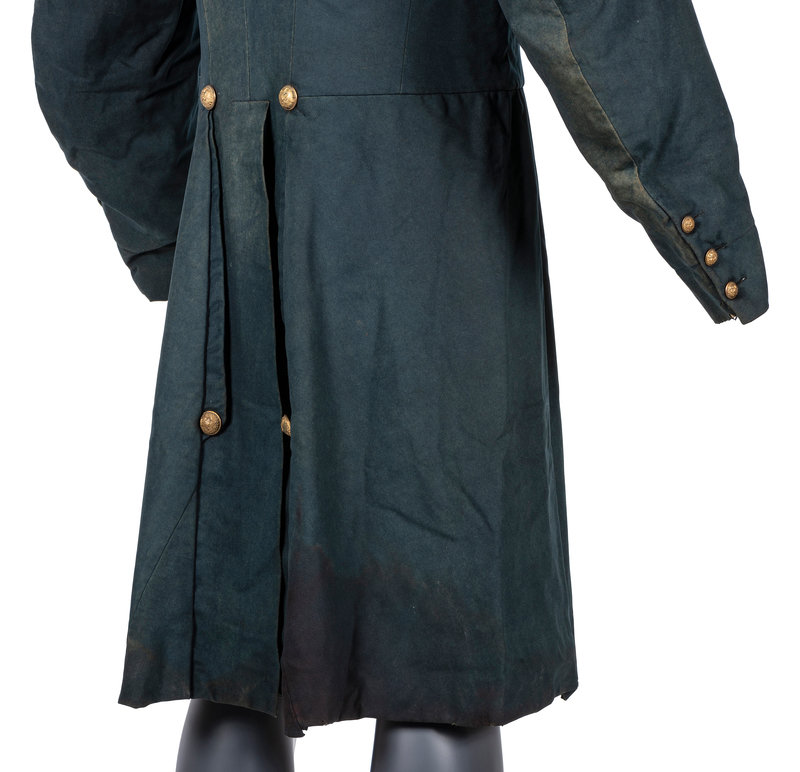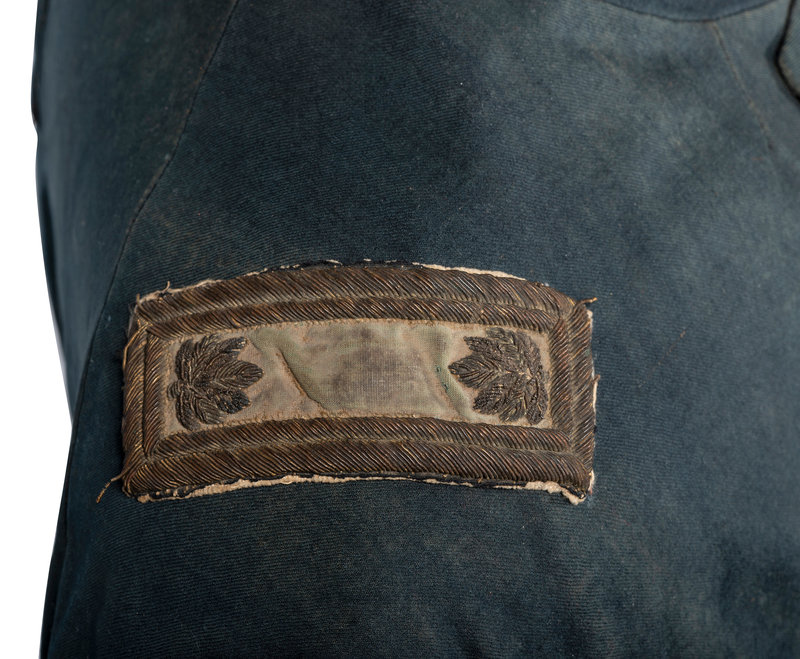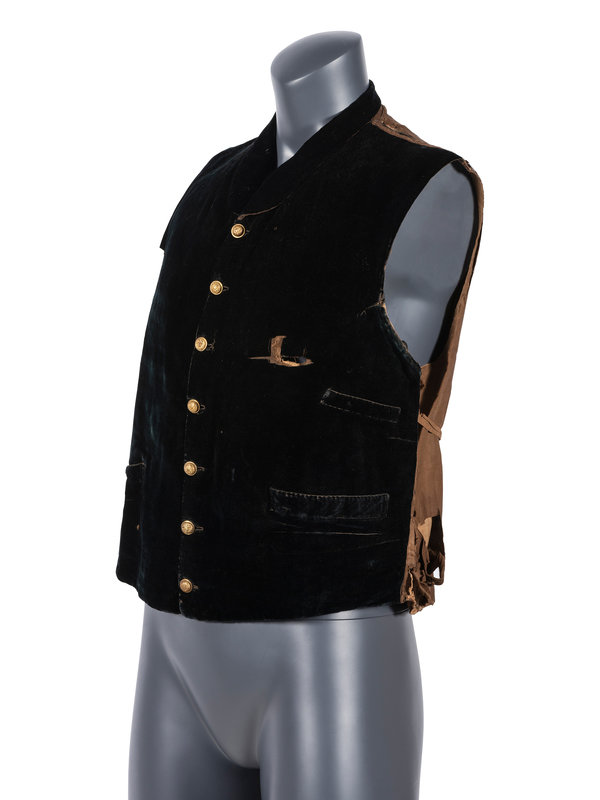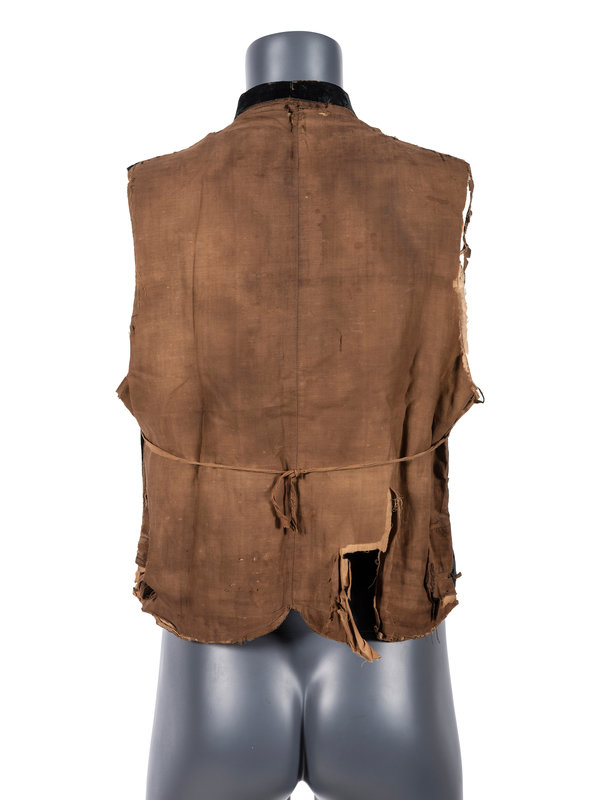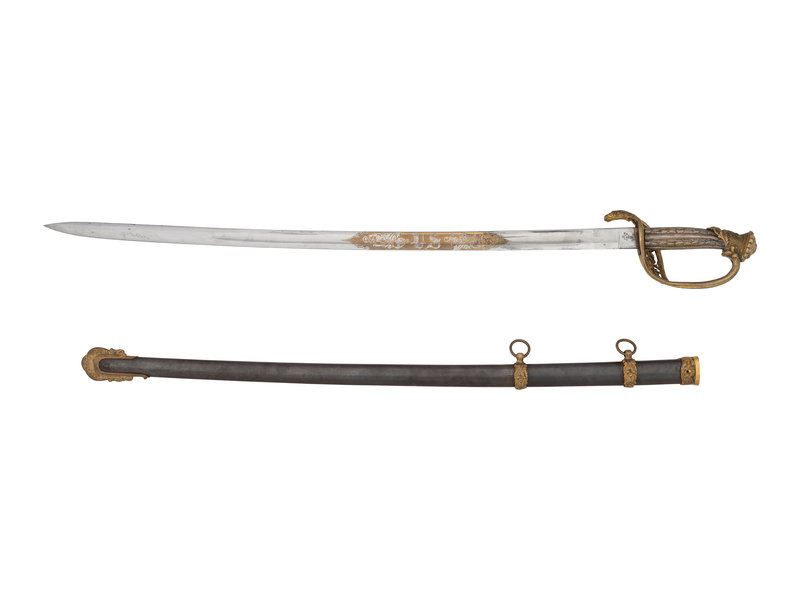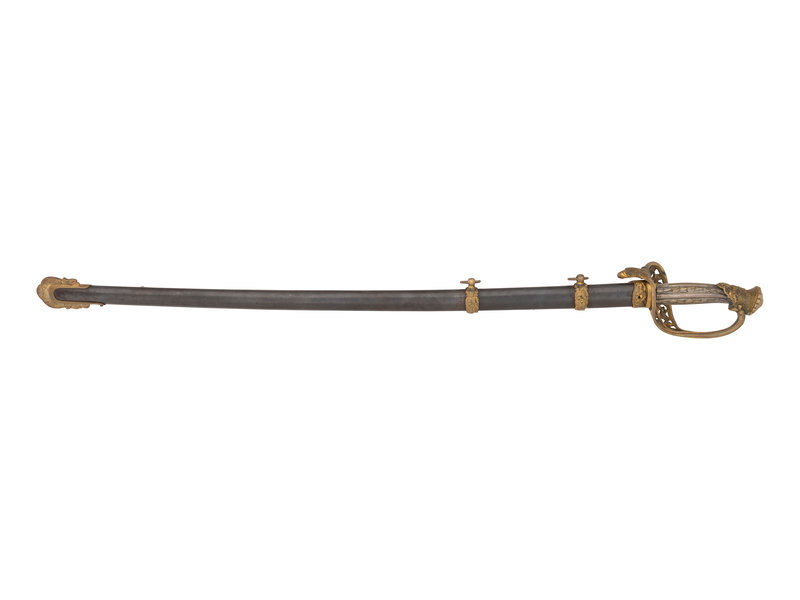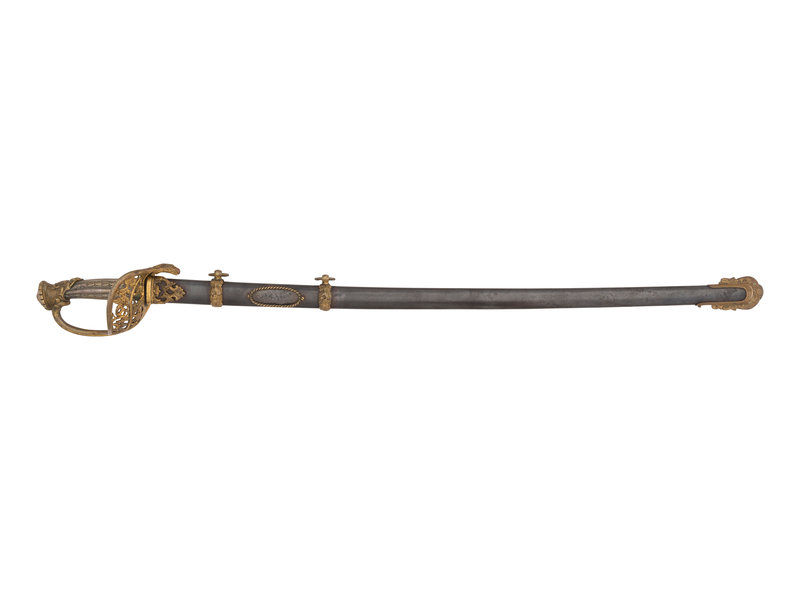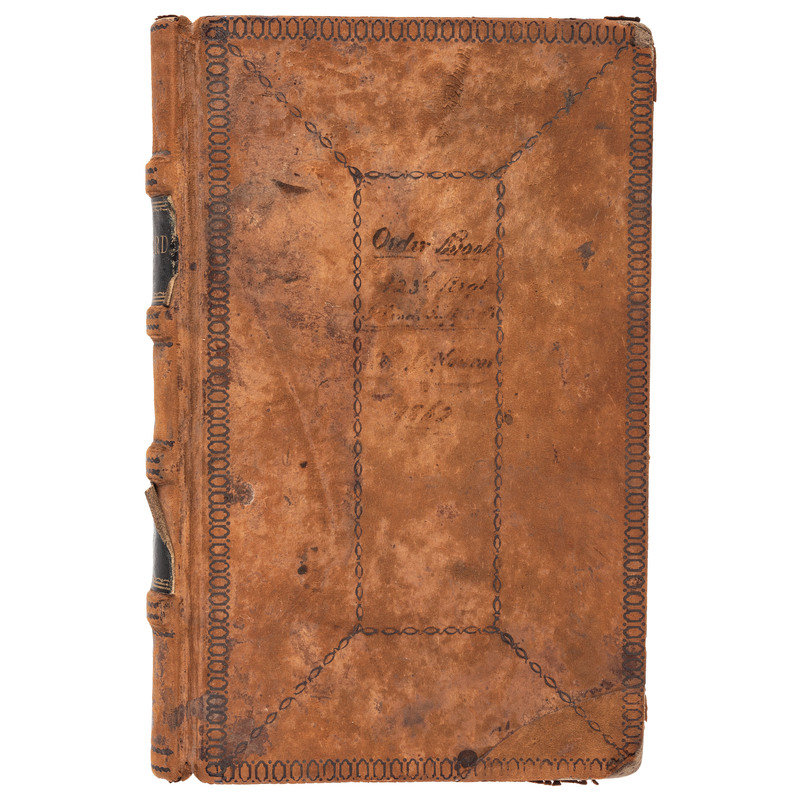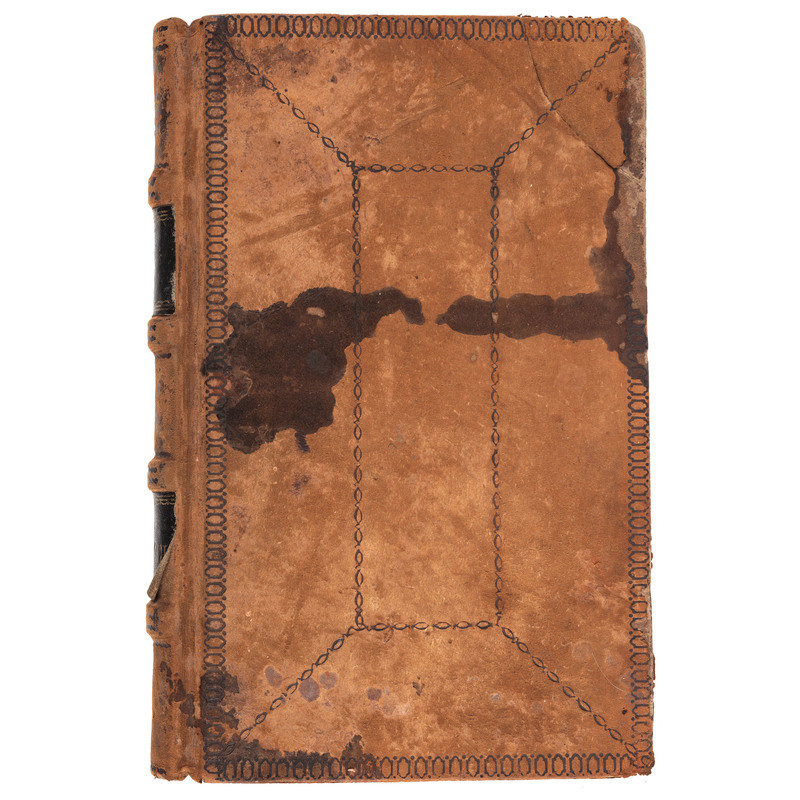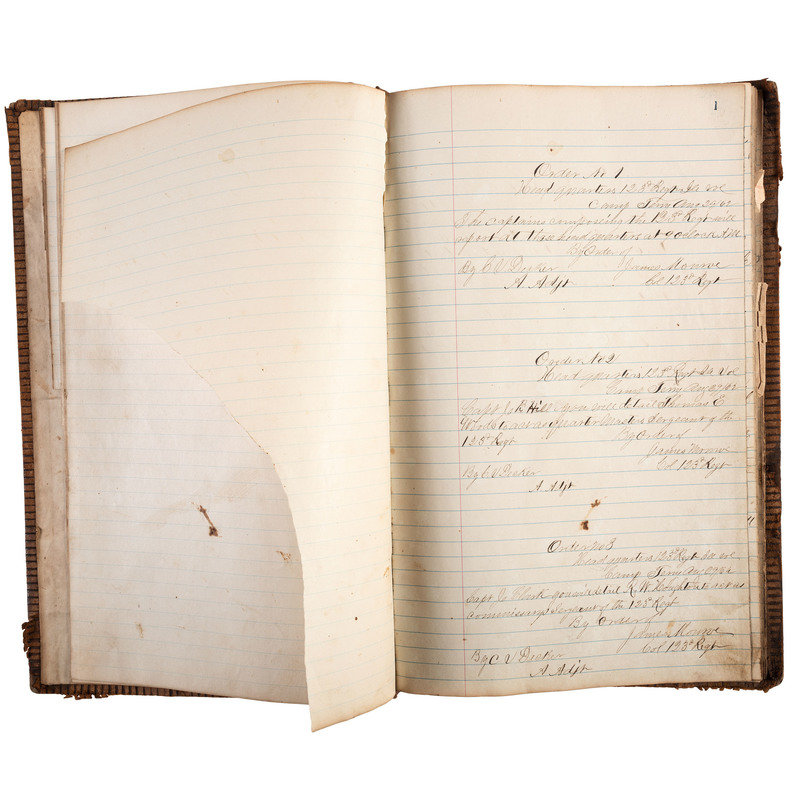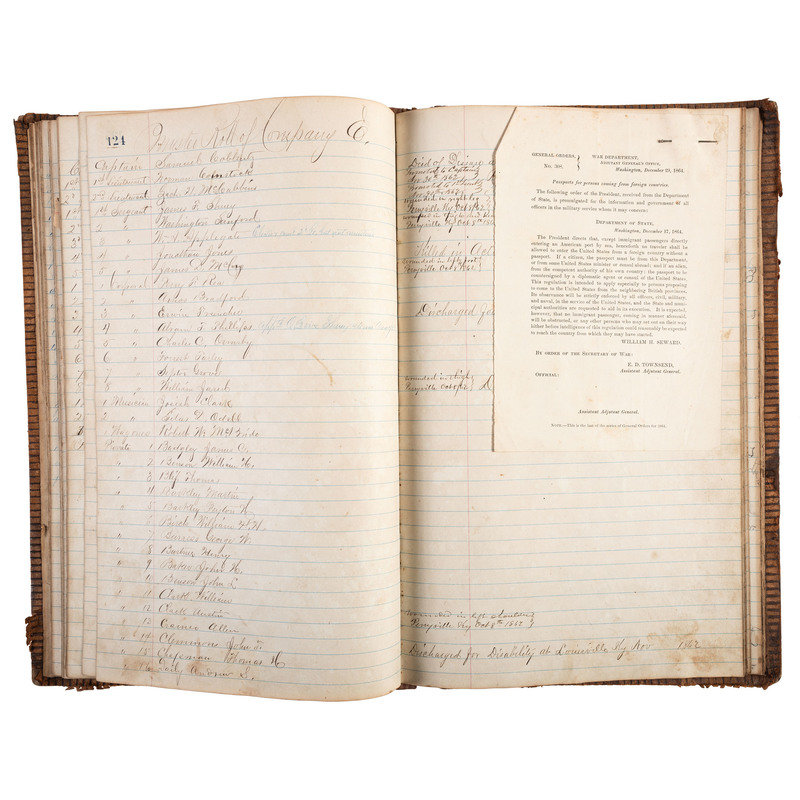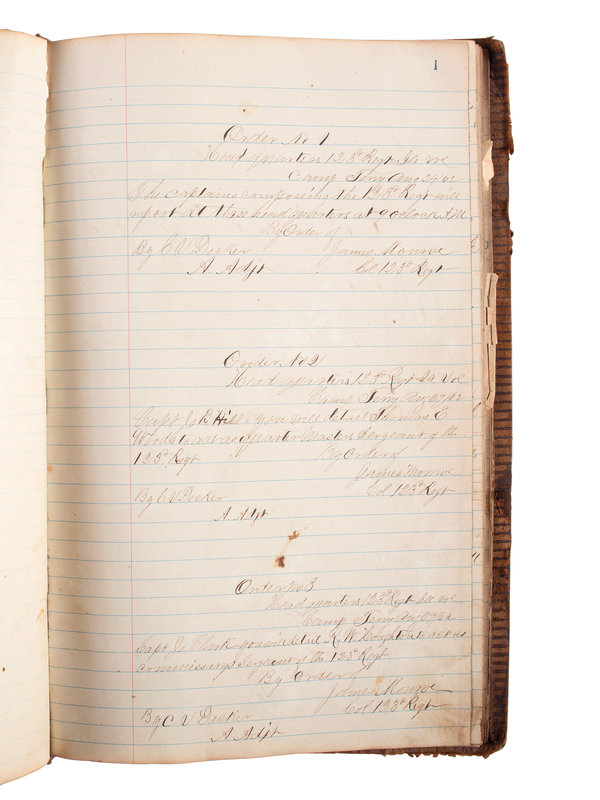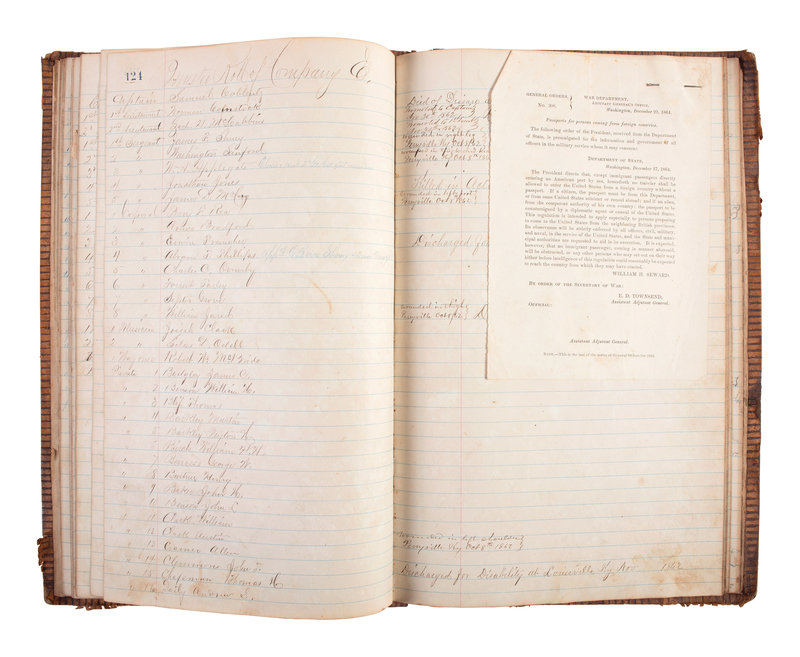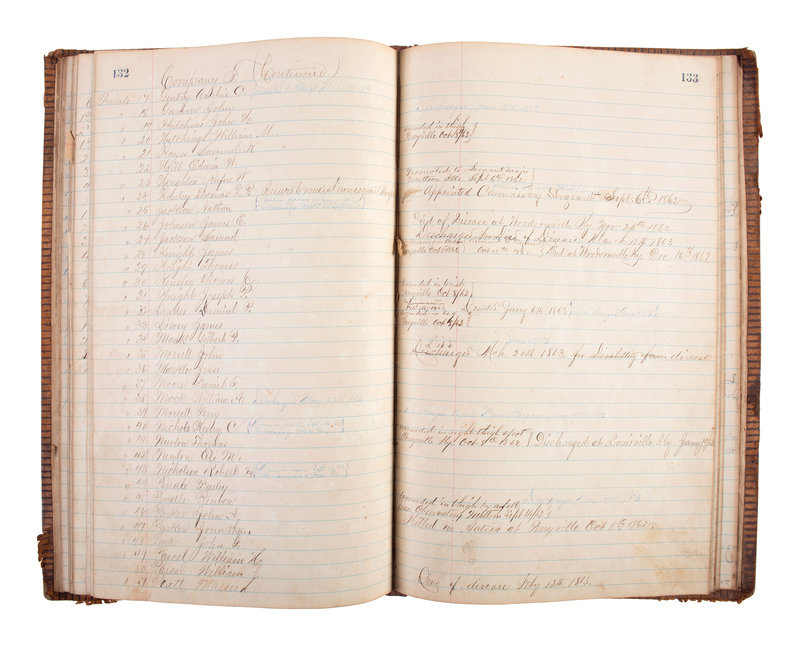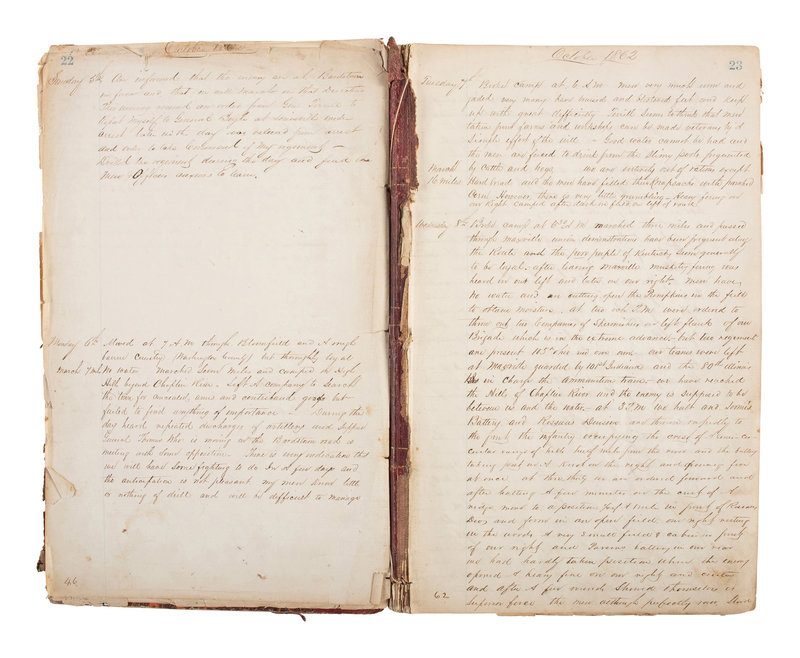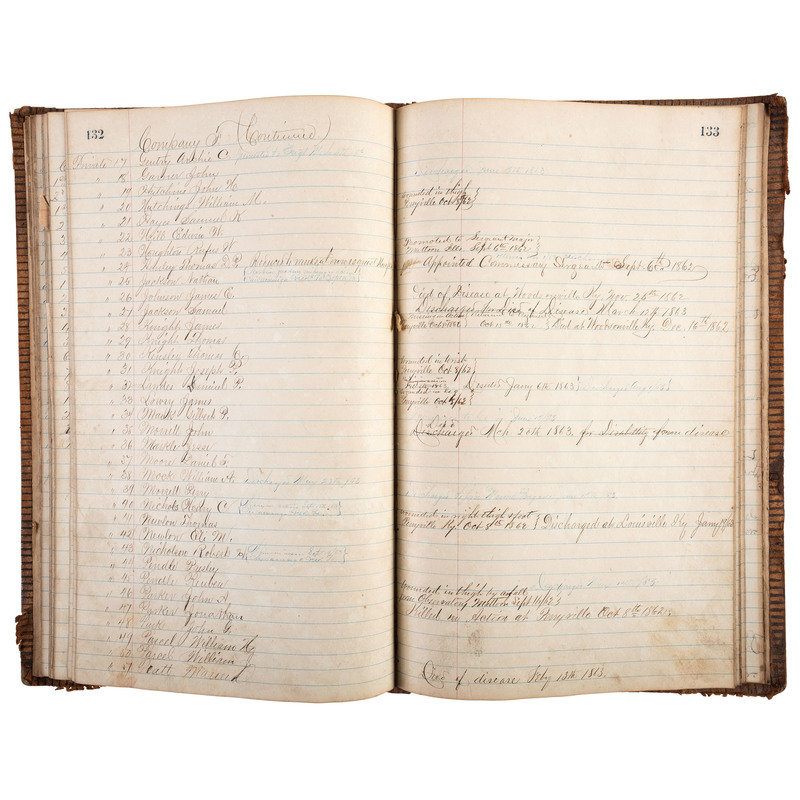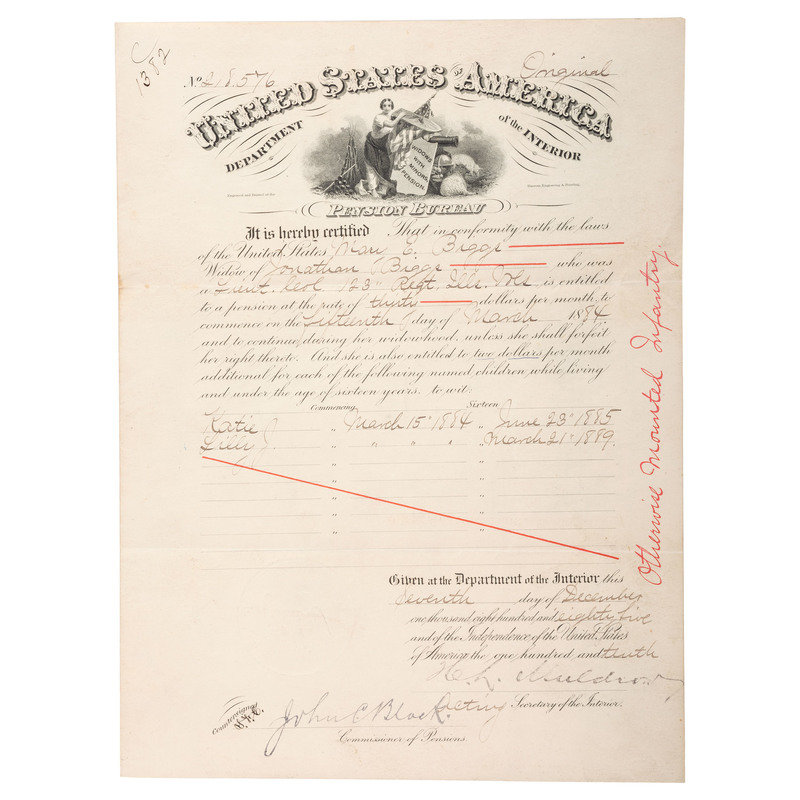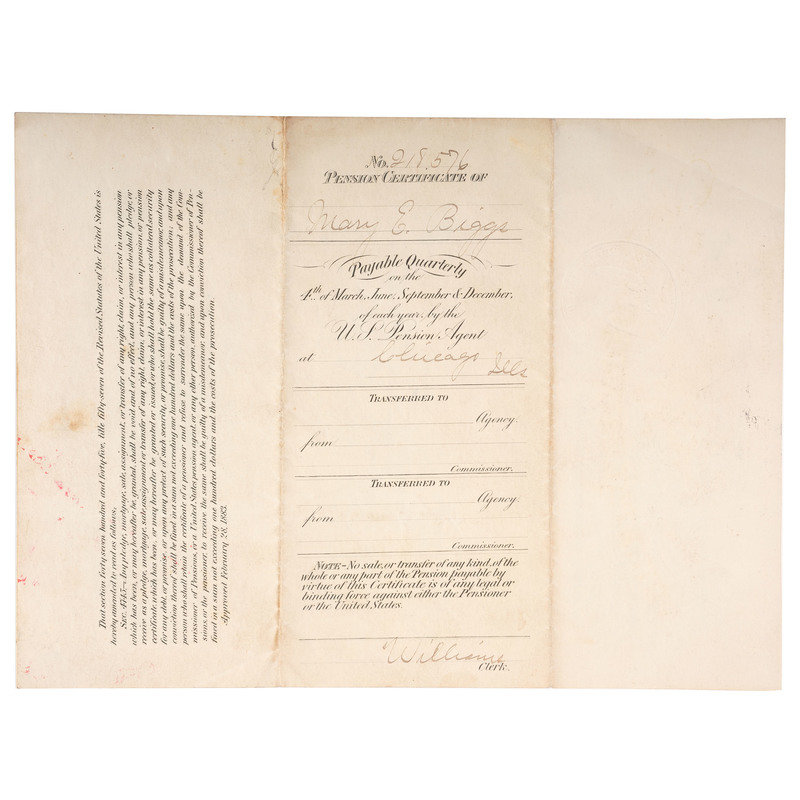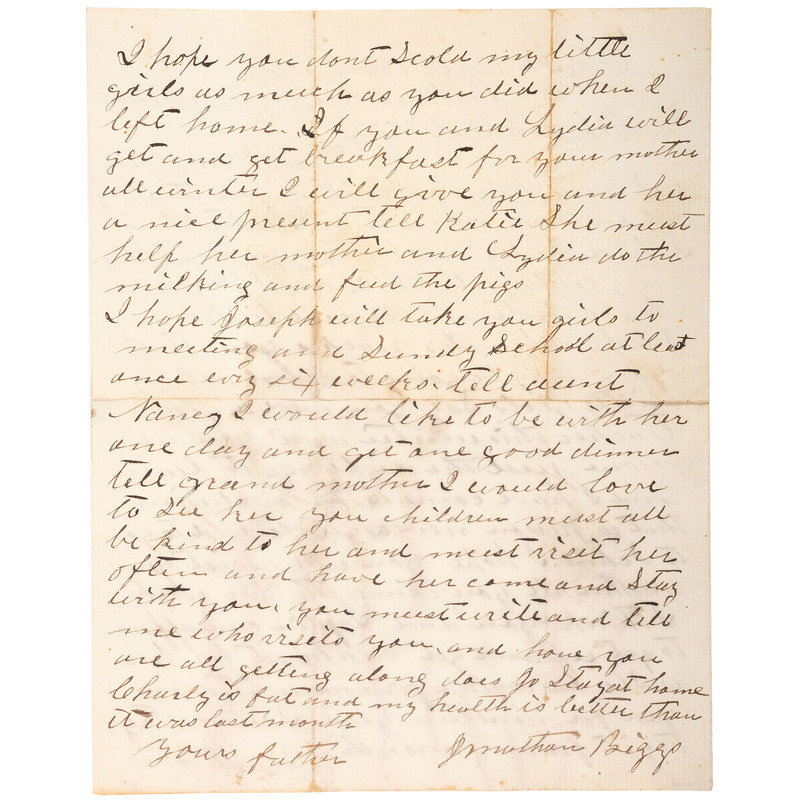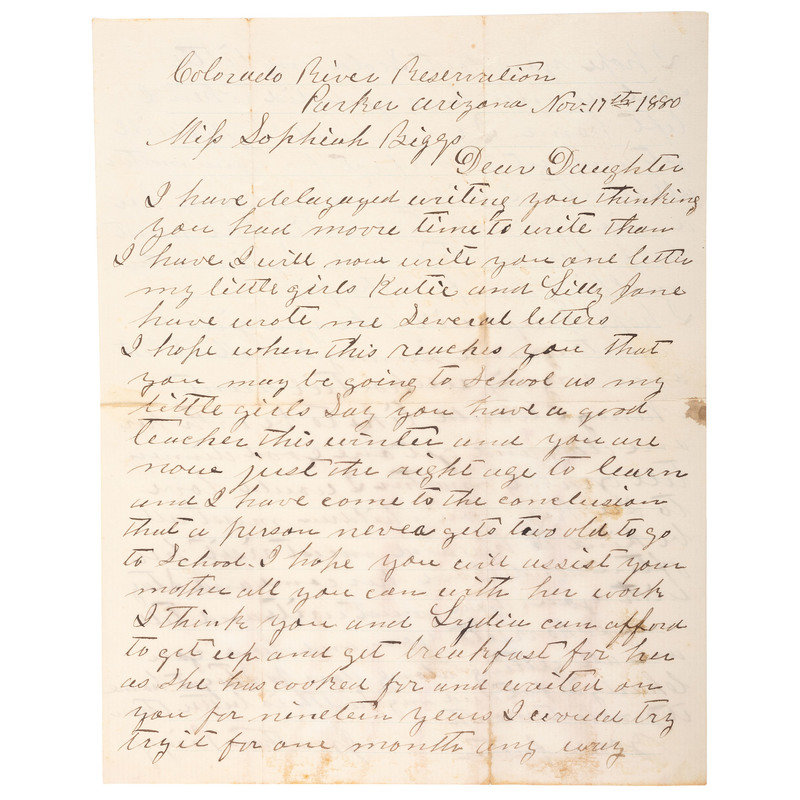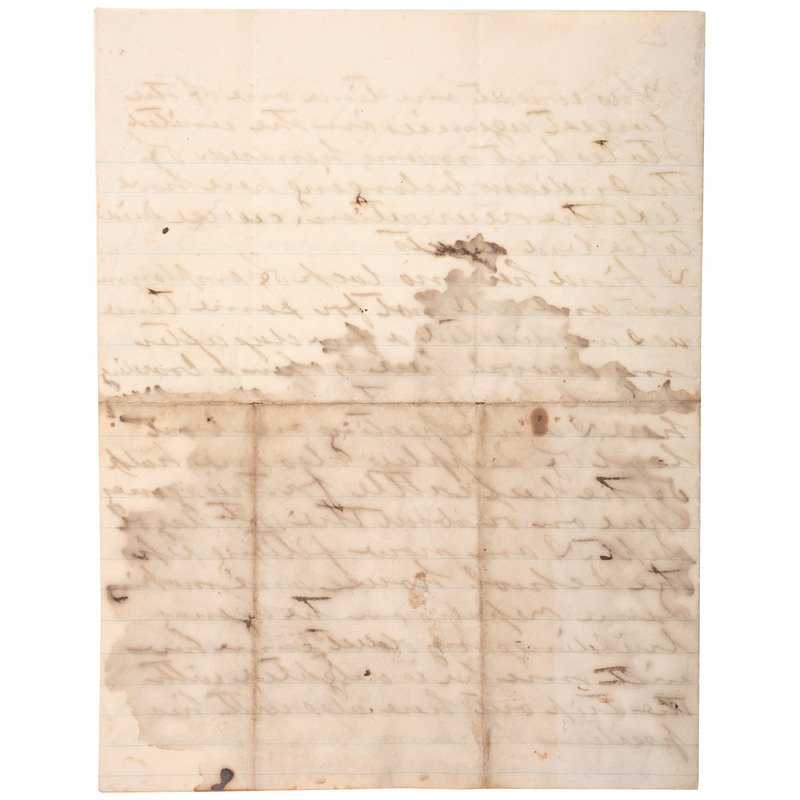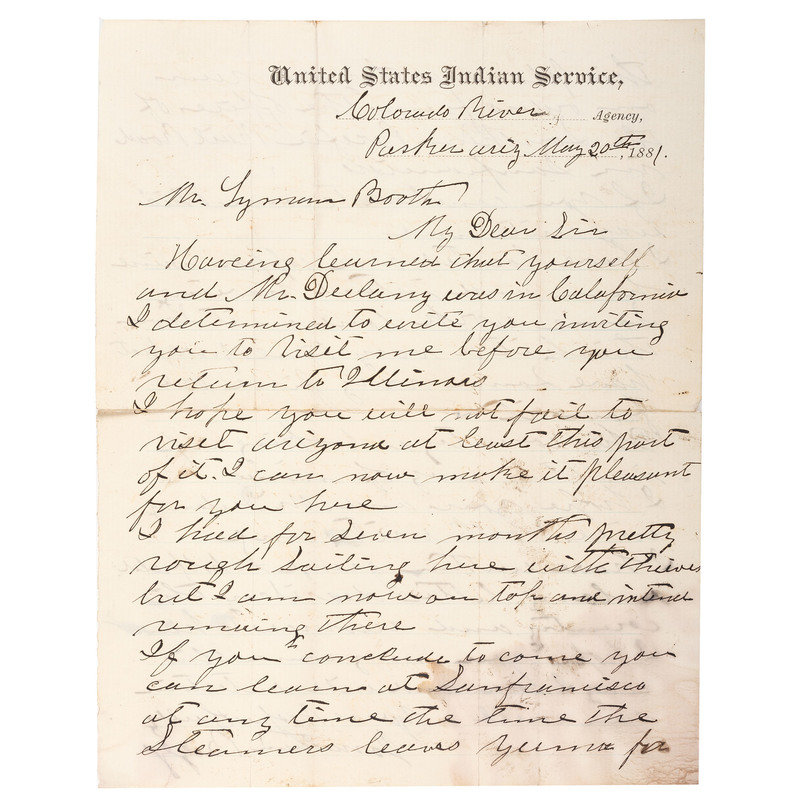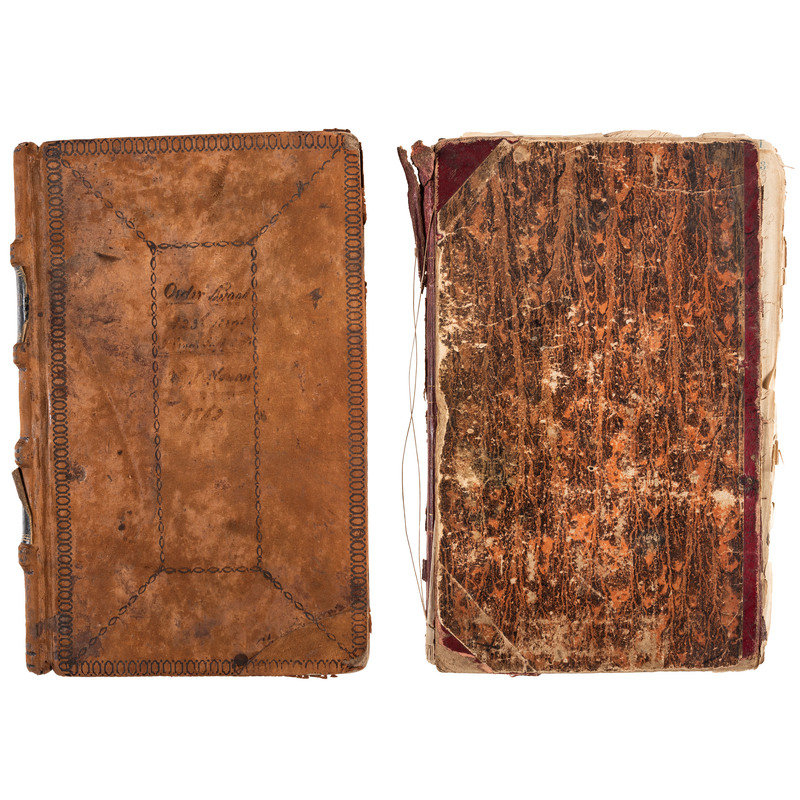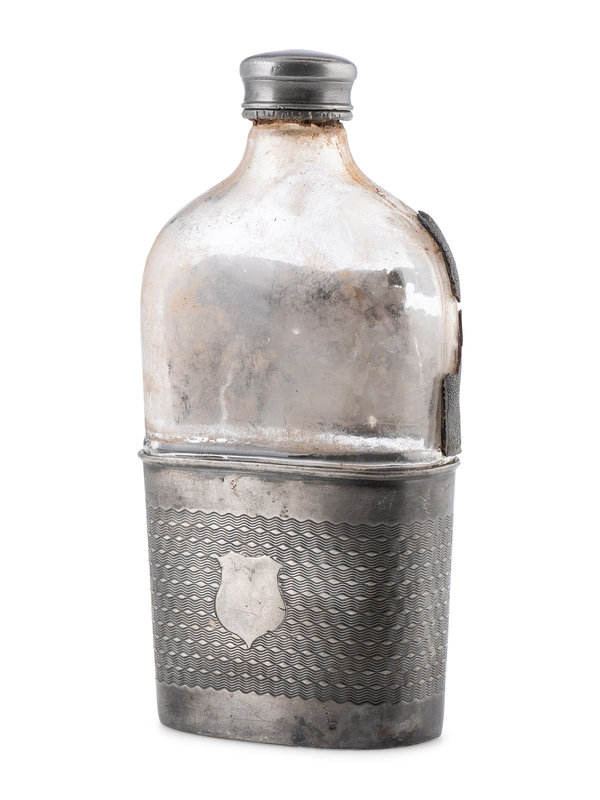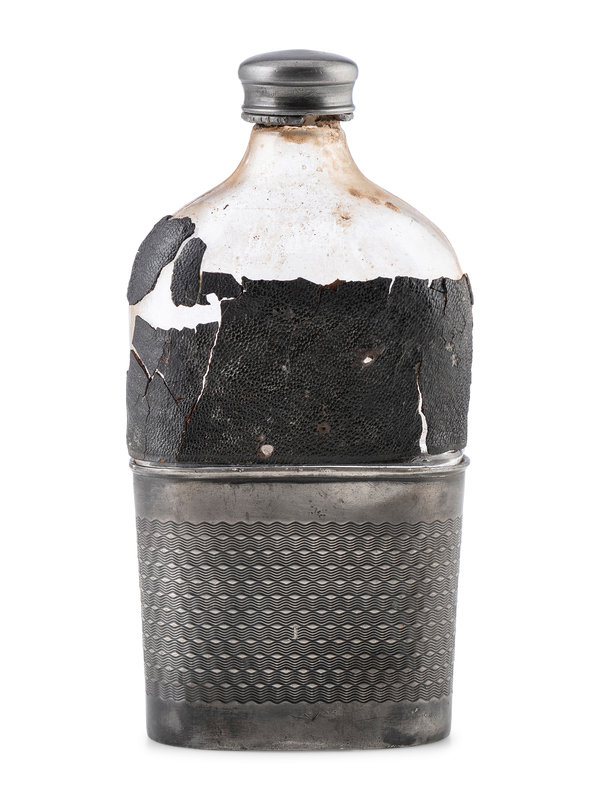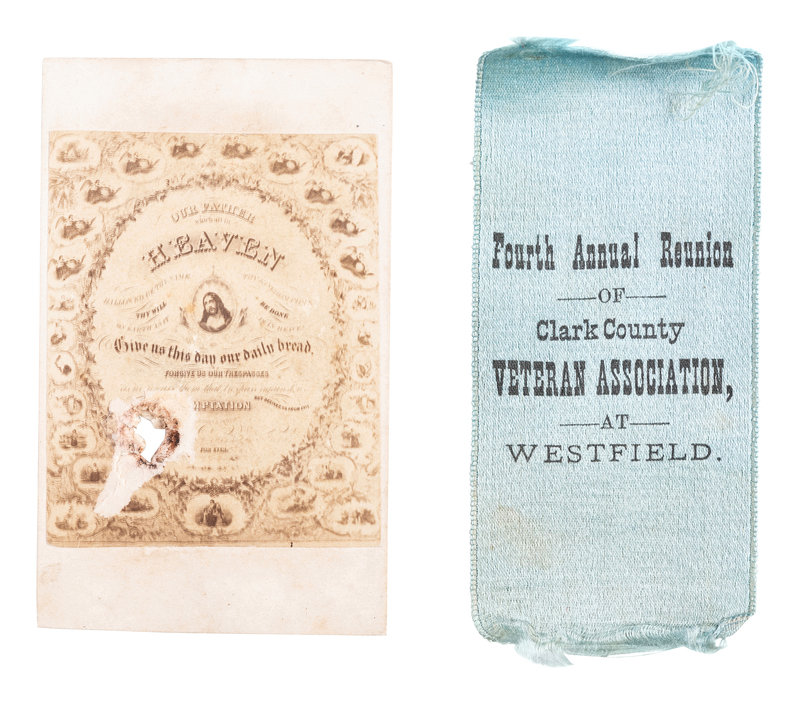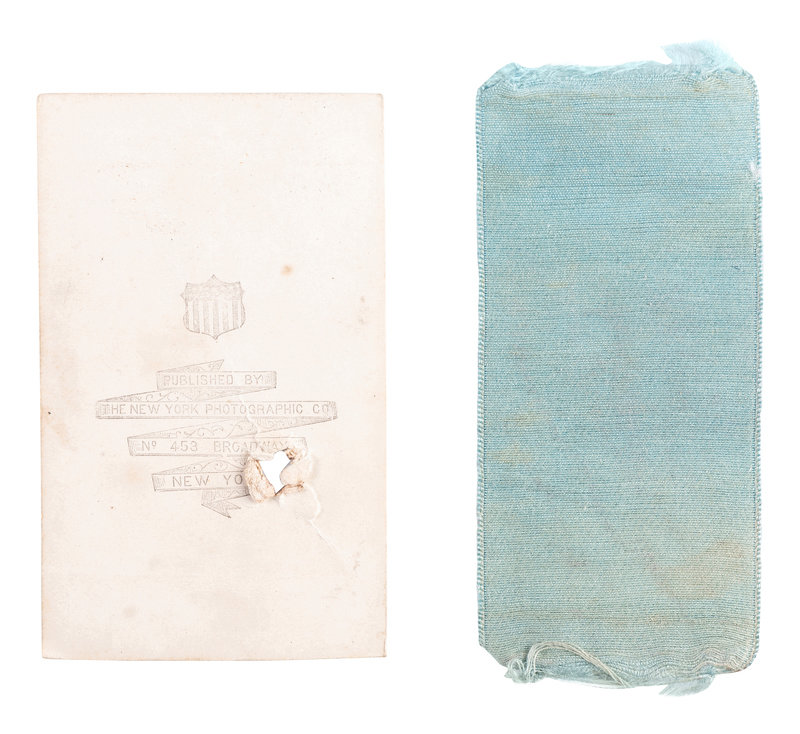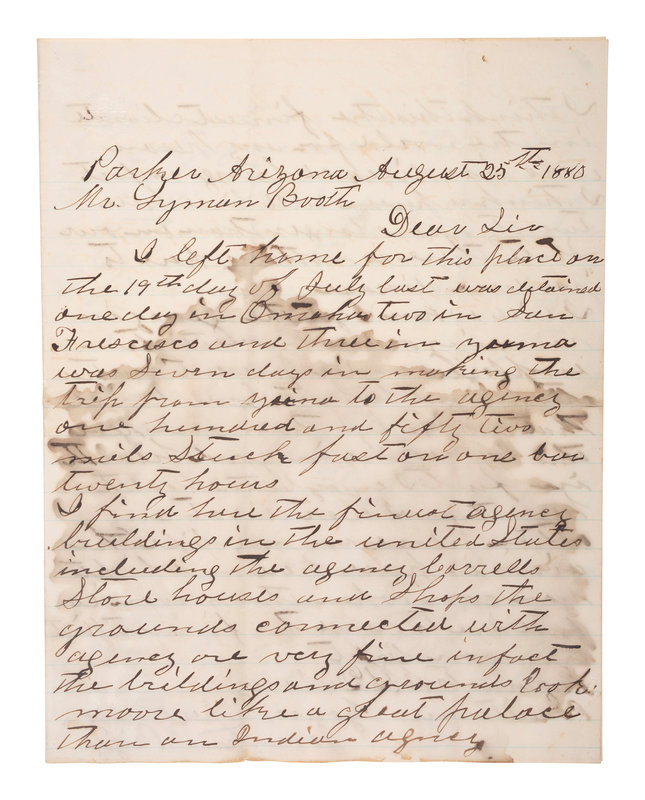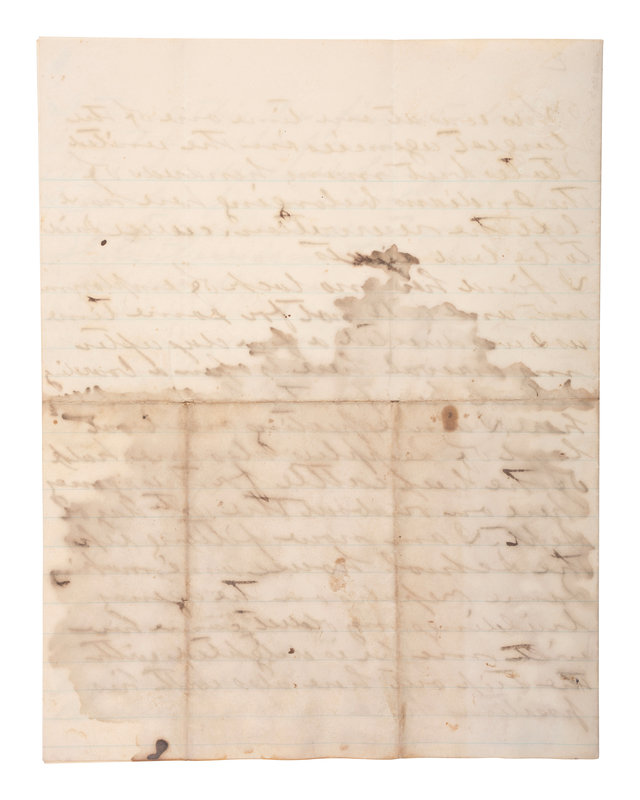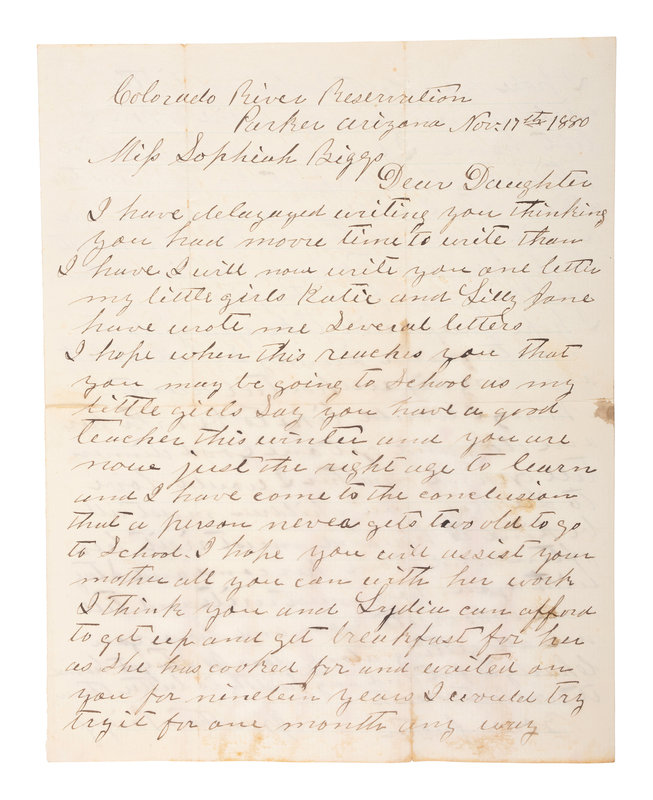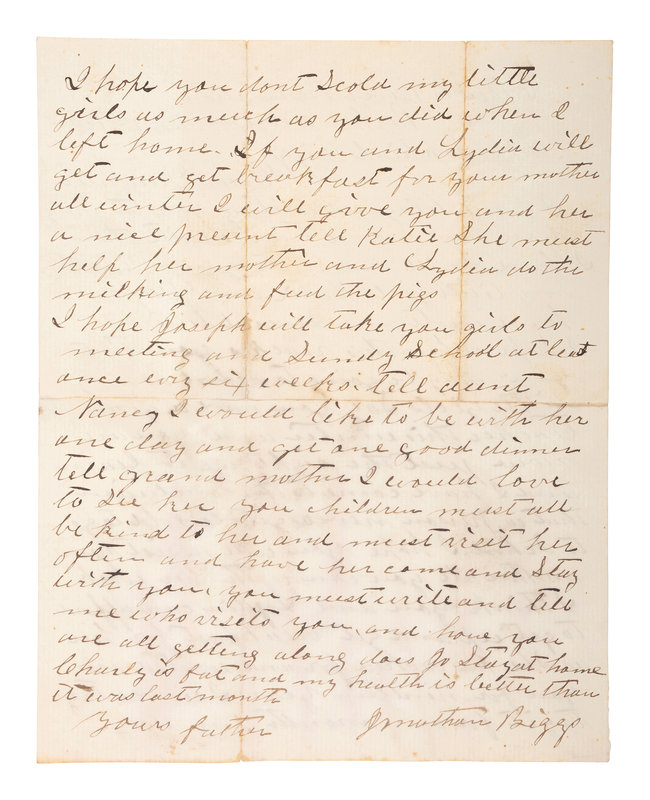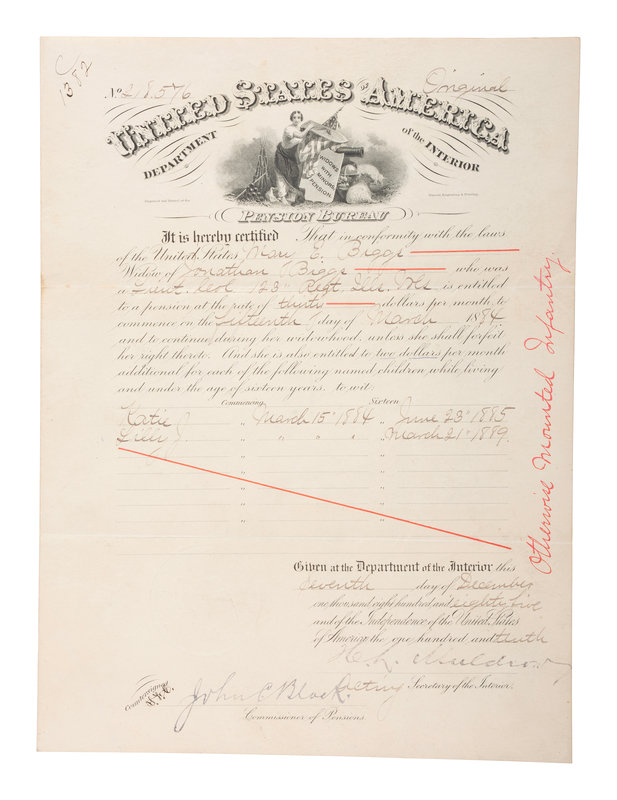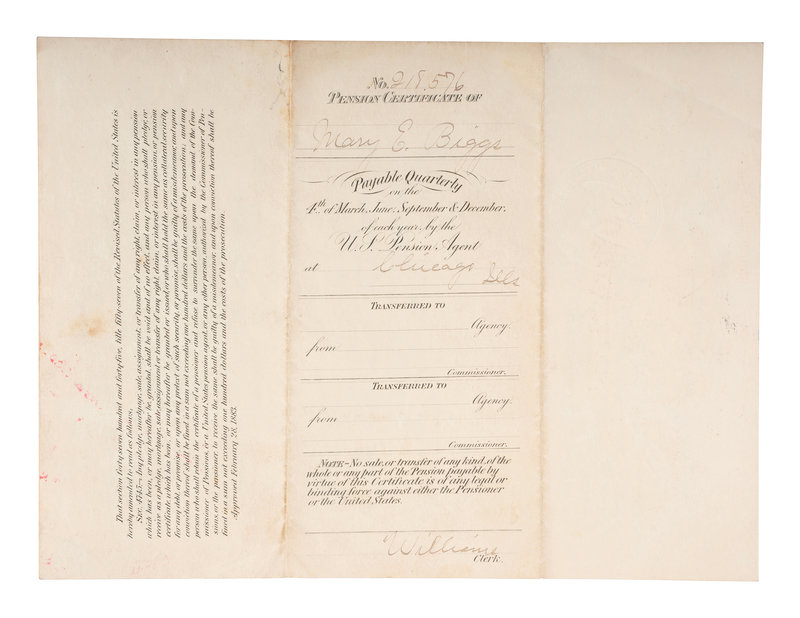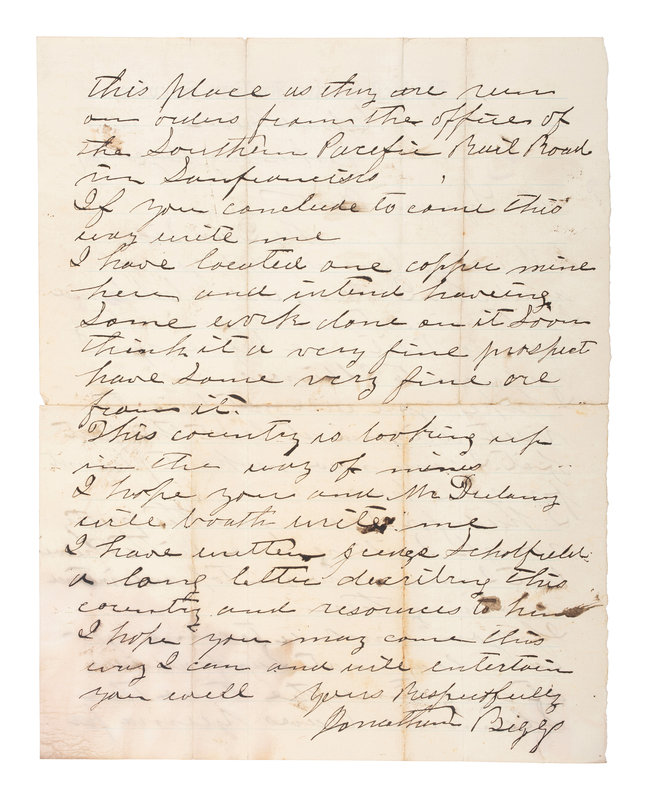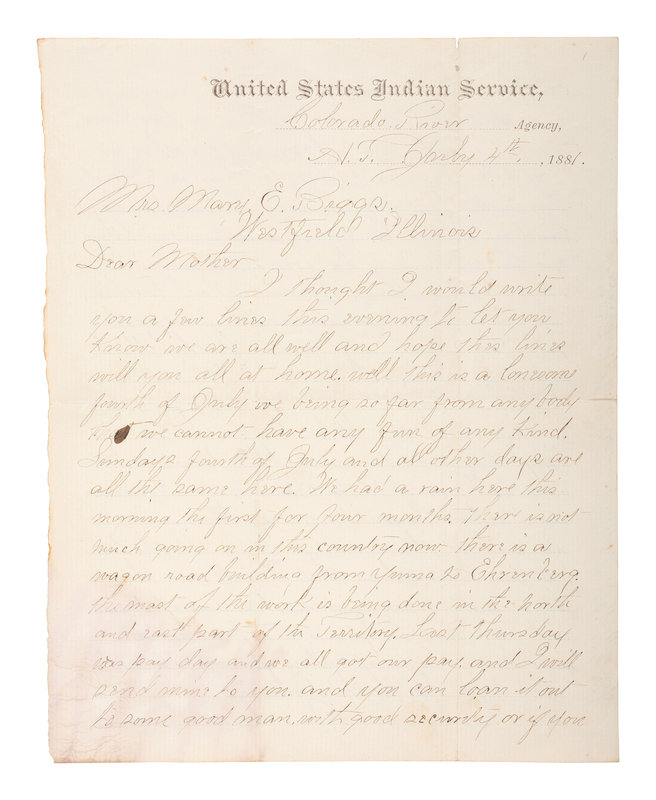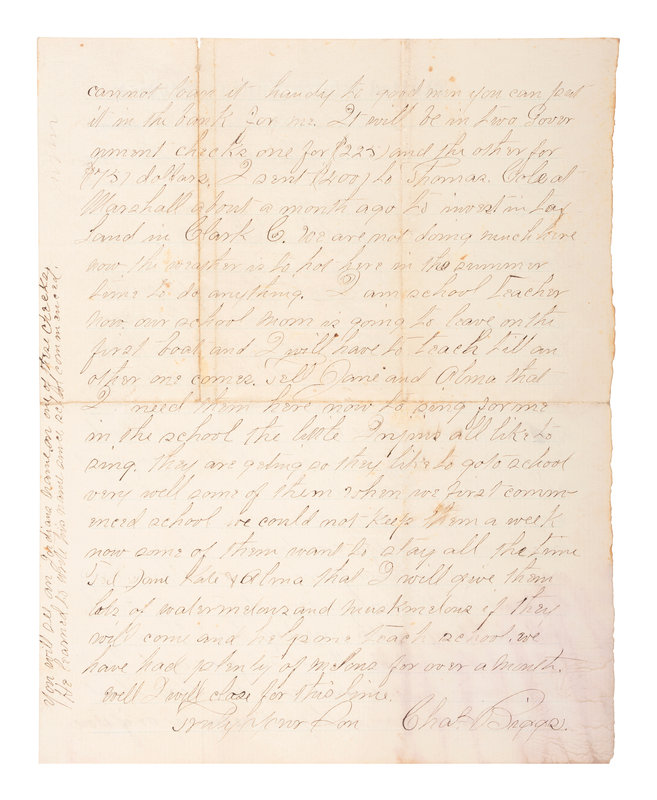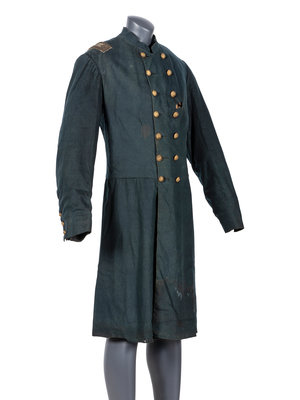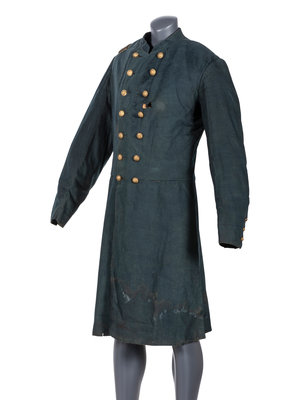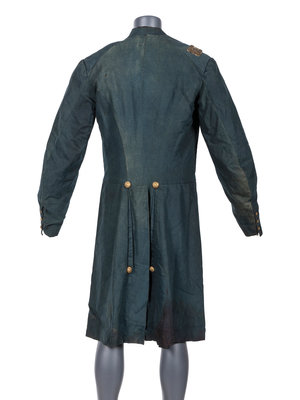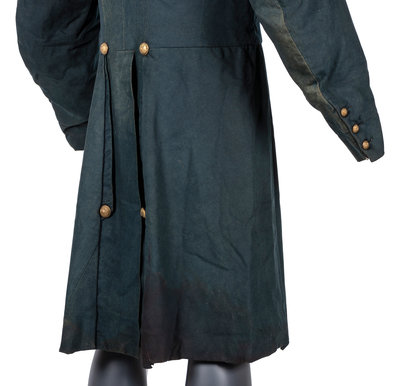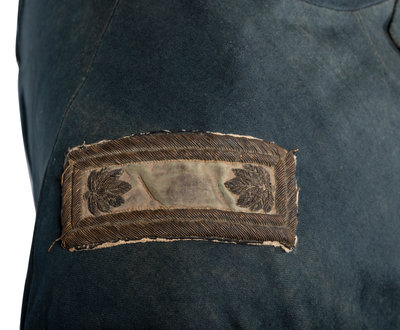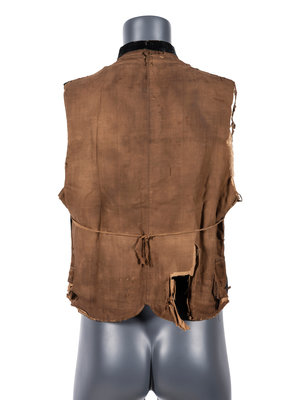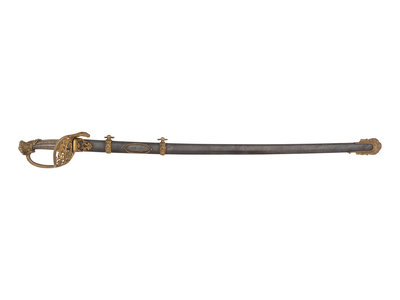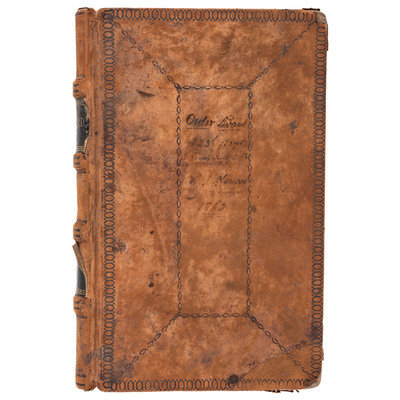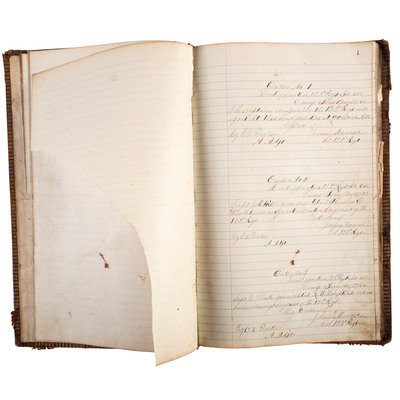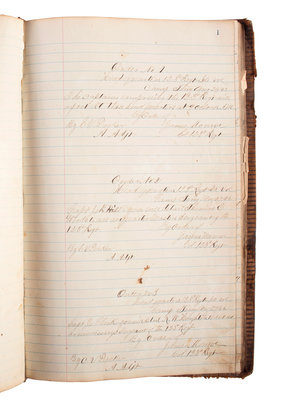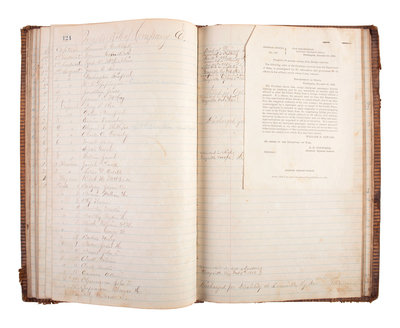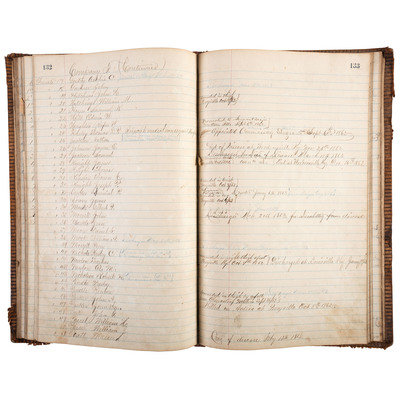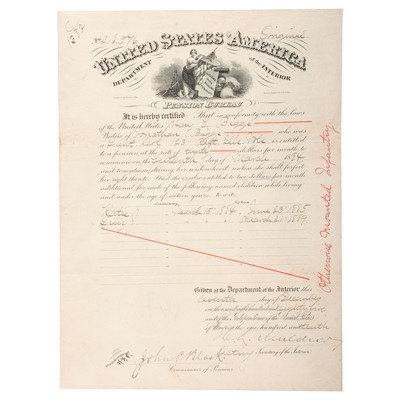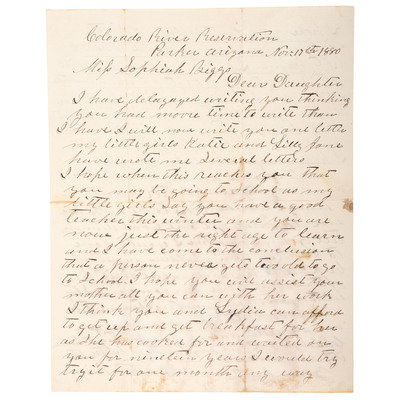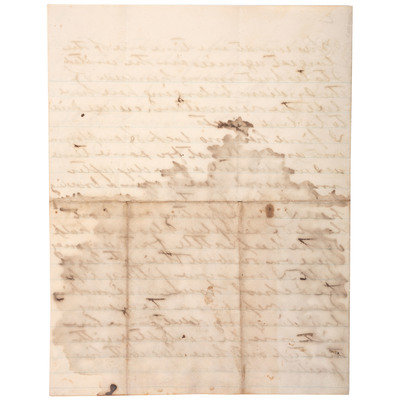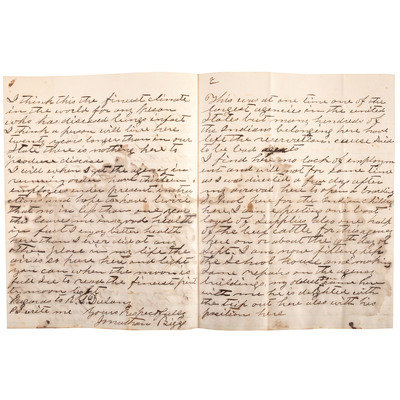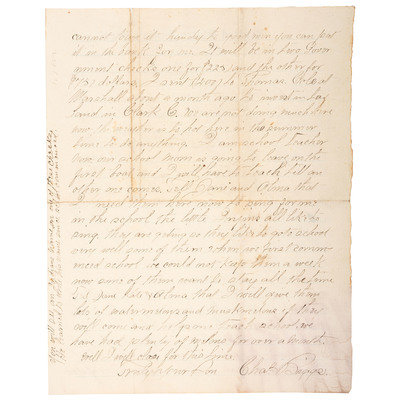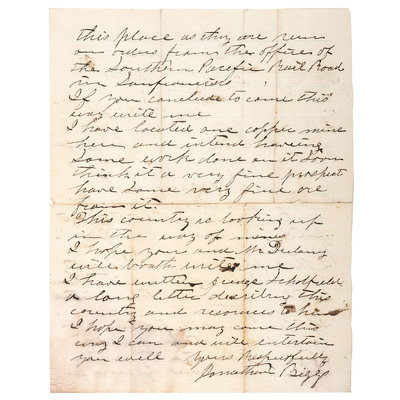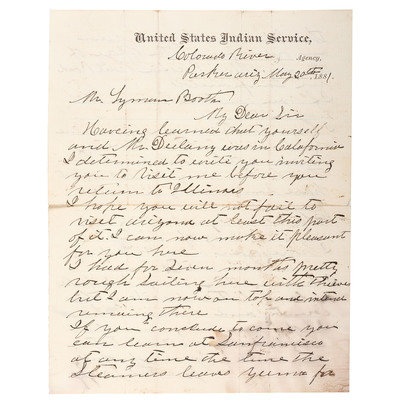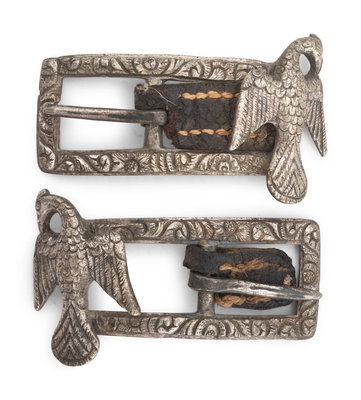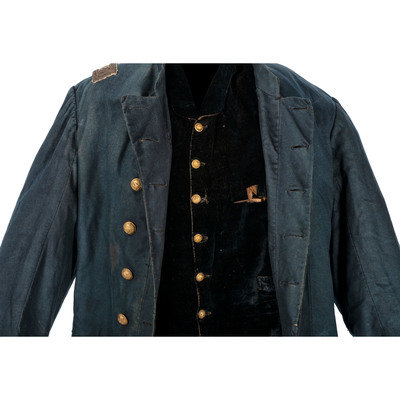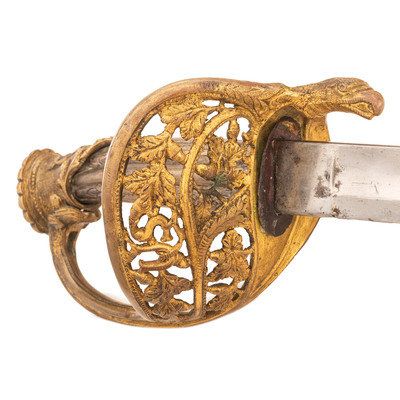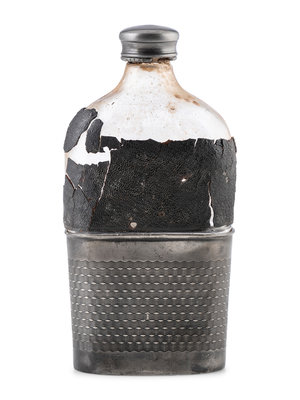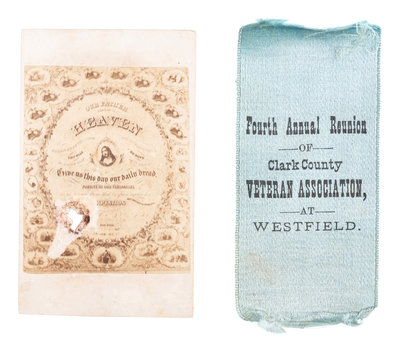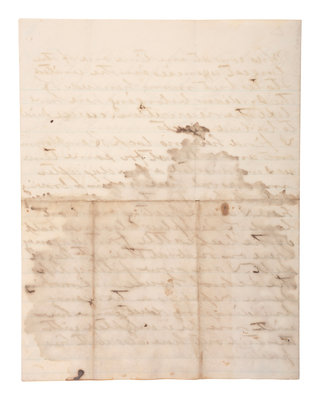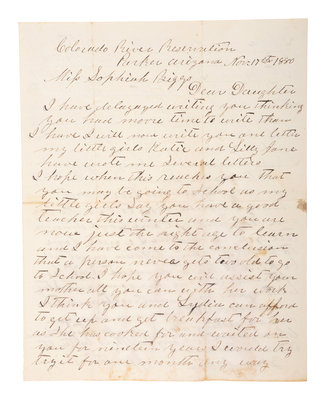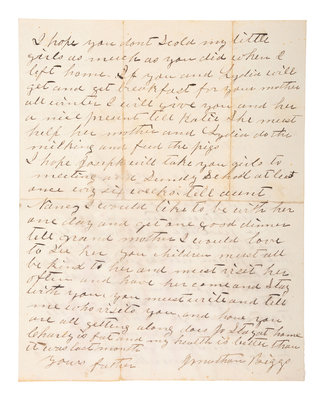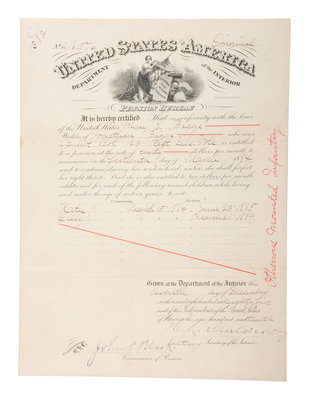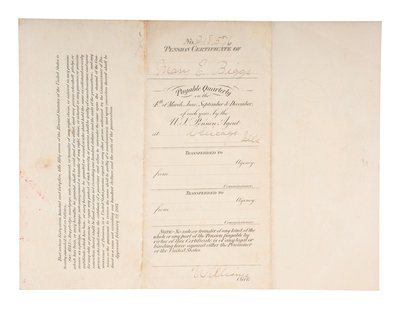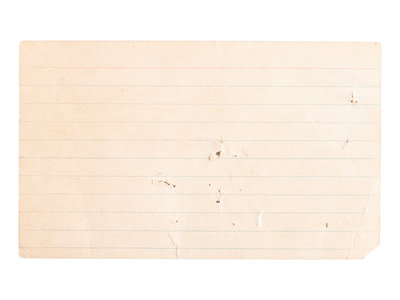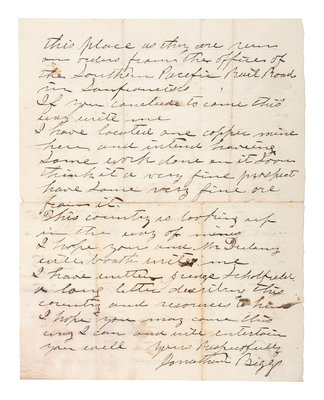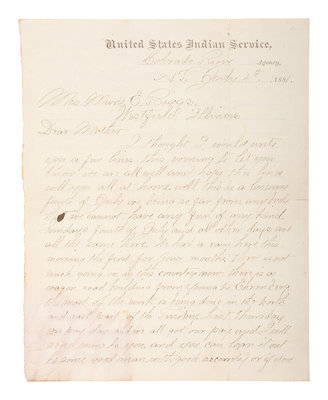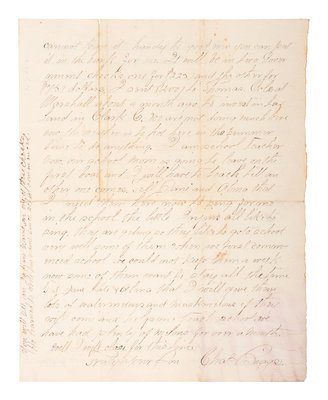A collection of items identified to Lieutenant Colonel Jonathan Biggs, 123rd Illinois Infantry, “Wilder’s Brigade,” highlighted by bullet-struck frock coat and vest worn during the assault on Selma, Alabama. 2 April 1865.
Sale 964 - The Civil War Collection of James C. Frasca
Nov 12, 2021
10:00AM ET
Live / Cincinnati
Own a similar item?
Estimate
$20,000 -
30,000
Price Realized
$25,000
Sold prices are inclusive of Buyer’s Premium
Lot Description
A collection of items identified to Lieutenant Colonel Jonathan Biggs, 123rd Illinois Infantry, “Wilder’s Brigade,” highlighted by bullet-struck frock coat and vest worn during the assault on Selma, Alabama. 2 April 1865.
The collection is comprised of:
Double-breasted lieutenant colonel’s frock coat with 7 large general officers’ staff buttons on each side, 3 small buttons on each cuff, and 4 large buttons on the back, each with “extra quality” backmark (coat is complete with evident wear from field use, few minor moth holes throughout, seam opening on the right hem). A ½ in. rent made by a minie ball is included on the left side of the coat between the third and fourth button (from the top). The hole goes through all the layers of the coat. The brown polished cotton lining is complete with quilting in the upper torso area (some discoloration on both sides of the chest area). Affixed to the right shoulder is a double-bordered lieutenant colonel of infantry bullion shoulder strap (gold embroidery and silver oak leaf are darkened by exposure to the elements, shoulder strap’s blue velvet center has faded to a light gray color).
[With:] Dark blue velvet vest with folded collar lined in brown silk, featuring 7 small general officers’ buttons on the front, each with “extra quality” backmarks. Three pockets are included; one lower pocket on each side and one watch pocket on the left side. The back of the vest is made of brown polished cotton with evidence of belt tabs at the lower portion. Two brown ties made of cotton taping are added to the back of the vest below the arm holes. A corresponding 1 in. rent made by a minie ball on the left side of the vest is in line with the third button from the top (vest’s back fabric includes a 6 in. tear on the right side with some deterioration, the facing of the right armhole is well worn and has separated).
[With:] An aged tag inscribed by Lilly Jane Biggs Bennett (Mrs. Brooke Bennett) the daughter of Jonathan Biggs, “Coat & vest worn by Col. Jonathan Biggs during the Civil War. The holes in coat & vest are where he was wounded during Civil War.” These uniform articles were worn by Lieutenant Colonel Biggs as he led his regiment on 2 April 1865, during the frenzied assault on Selma, Alabama. In his written testimony, Lieutenant Thomas Bane from the 123rd reported that his commander received a “gunshot wound from the enemy, the ball entering near the left nipple, lodging near the spine.” It was a wound that would plague Biggs the rest of his life and eventually cause his death some twenty years later.
[With:] High quality presentation grade Model 1850 field and staff officer’s sword and scabbard with ornate embellishments throughout. 39 in. overall length with 32 in. blade. The bright blade is etched in old English lettering with gold accents; the obverse featuring a spread eagle with “E PLURIBUS UNIM” on a ribbon in its beak, with “US” engraved on the reverse. The blade is manufacturer stamped “W. Clauberg / Solingen” beneath the standing Knight logo. The grips are silver. The ornate brass guard has a pierced “US” with eagle head thumb rest. The scabbard is dark metal with ornate brass throat, hangers, and drag. The blank oval presentation escutcheon between the scabbard rings features a rope like brass border. Accompanying the sword are the two silver eagle buckles for the leather hanger straps with remnants of the strap leather.
[With:] Regimental letter and order books of the 123rd Illinois Infantry, kept by Colonel James Monroe. Two books passed down to Biggs when Colonel Monroe was killed in action at Farmington, Tennessee on 7 October 1863. They include Monroe’s report of the Battle of Perryville on 9 October 1862, where over 200 men of the 123rd Illinois Infantry were casualties. One book has a leather cover and inscription on front, “Order Book 123rd Regiment Illinois Infty Vols., J. Monroe 1862.” The other book is missing the front pasteboard cover and includes post-war entries by Biggs family members.
The first book begins 29 July 1862 and has sporadic entries until 7 Dec. (p. 48). Col. Monroe notes events in addition to battles. For example, in the first entry (29 July) he comments: “Ladies of Charleston [IL] presented a Beautiful flag to the Regiment Aug. 28th Received by Major Connolly.” Sept. 5 “Went to Springfield & Drew our guns & Accourtrements.”
On 22 Sept. he comments: “President this day issued his proclamation declaring all slaves in states or parts of states in Rebellion against the Gov. of U.S. on January 1st 1863 to be free and enjoining all officers of the army to do all in their powers to enforce the order.___ This okay all right & is right, I think but it is certainly ill timed & unfortunate and cannot fail to have a bad effect on the soldiery and upon our cause. It will… defeat the War party in the next elections and enable the men of the Vallandingham stripe to carry out their traitorous designs….”
As the unit moved around the battlefields, Monroe noted the miles marched in the left margin. He occasionally adds casualties and other issues (“Have no tents”). 6 Oct.: “There is every indication that we will have some fighting to do in a few days and the anticipation is not pleasant. My men know little or nothing of drill and will be difficult to manage.” They were also having trouble finding clean water and their rations were running out. At one point, the men were filling their knapsacks with parched corn.
The 8 Oct. entry is over two pages long: “…men have no water and are cutting open the pumpkins in the field to obtain moisture…. Terrill seeing the condition of affairs ordered a retreat and the men fell back in great disorder…. I found the General a few hundred yards in the rear and joined him with almost one hundred men. In a few minutes we fell back to S??? Bush Battery & then Terrill was kill’d whilst sitting on the ground by a shell….”
The second book contains copies of General Orders, battle reports (Murfreesboro, Hoover’s Gap, Foyers Island), and more. He also has reports of equipment losses. A number of pages left blank and many removed. The back has a muster roll of the unit with notes on each man – if killed, wounded, captured, discharged, etc.
[With:] Leather-covered glass whiskey flask. 6 3/4 in., top half covered with black leather; bottom half covered by a fitted pewter cup decorated with wavy zig zag design and a plain Union shield. The screw-on cap is also pewter. The glass of the flask and the cup are in near perfect condition, but approx. 40% of the leather remains.
[With:] Civil War-period CDV of the Lord’s Prayer. New York: New York Photographic Company, [ca 1860s]. This card appears to have been pierced by a bullet.
[With:] Fourth annual reunion ribbon. 2 x 4 in. blue silk reunion ribbon, “Fourth Annual Reunion of Clark County Veteran Association at Westfield.”
[With:] Group of documents reflecting Biggs’ post-war activities, including: 13 documents and letters of Jonathan Biggs while working with the US Internal Revenue Service and the US Indian Service (including typed transcriptions). -- Biggs’ original pension certificate. -- 3 personal family letters.
[Also with:] Copies of Biggs’ National Archives military and pension records, a copy of the History of the 123rd Illinois Infantry. Biggs is featured in the book, Brevet Brigadier Generals in Blue, by Hunt and Brown (p. 53).
A native of Illinois, Biggs was a farmer and livestock dealer before the war. Although he helped recruit Company F of the 123rd Vols., instead of becoming its captain, he was elected lieut. col. of the regiment, putting him second in command. He was promoted to colonel after James Monroe was killed
and would lead the regiment for the remainder of the conflict. Biggs was wounded three times, the most serious, a minie ball through his lungs at the Battle of Selma 2 April 1865. This wound never healed completely and would contribute to his death in 1883. After the war he was very active in veterans' affairs.
A native of Illinois, Biggs was a farmer and livestock dealer before the war. Although he helped recruit Company F of the 123rd Vols., instead of becoming its captain, he was elected lieut. col. of the regiment, putting him second in command. He was promoted to colonel after James Monroe was killed
and would lead the regiment for the remainder of the conflict. Biggs was wounded three times, the most serious, a minie ball through his lungs at the Battle of Selma 2 April 1865. This wound never healed completely and would contribute to his death in 1883. After the war he was very active in veterans' affairs.
The Civil War Collection of James C. Frasca
Condition Report
Auction Specialist

